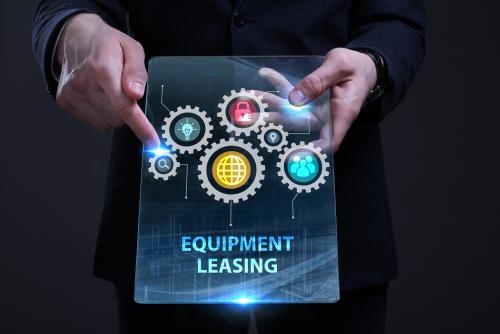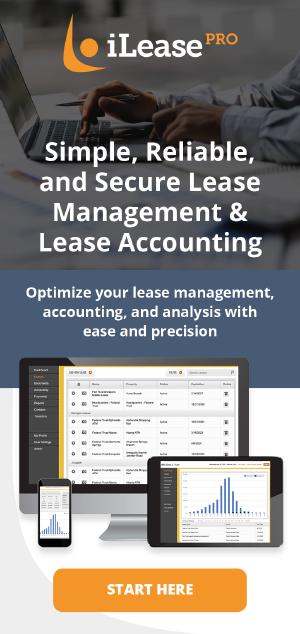Unlocking the Potential of Equipment-as-a-Service (EaaS) Under ASC 842

In today’s rapidly evolving business landscape, companies are rethinking traditional approaches to capital investment. One innovation gaining traction is Equipment-as-a-Service (EaaS), a business model that aligns with the growing emphasis on flexibility, operational efficiency, and sustainability. For finance professionals and CPAs, understanding the implications of EaaS under ASC 842 is critical to navigating the financial and accounting challenges that accompany this model.
What Is Equipment-as-a-Service (EaaS)?
EaaS transforms the traditional ownership model into a subscription-based service where businesses pay for the use of equipment rather than owning it outright. Payments are often tied to performance metrics such as uptime, output, or usage levels, making the arrangement highly flexible and adaptable to business needs. EaaS offers several advantages:
- Cost predictability: Companies avoid large upfront capital expenditures and instead incur costs in line with usage.
- Operational flexibility: The model allows businesses to scale their operations by increasing or decreasing their equipment usage based on demand.
- Access to the latest technology: Regular upgrades or replacements ensure that companies use cutting-edge equipment without the burden of ownership.
- Sustainability benefits: Service providers are incentivized to maximize the efficiency and lifespan of equipment, reducing waste and environmental impact.
EaaS and ASC 842: The Intersection
ASC 842, the lease accounting standard introduced by the Financial Accounting Standards Board (FASB), governs how leases are accounted for on financial statements. EaaS arrangements often fall under the scope of ASC 842, and understanding the nuances is crucial for accurate reporting.
Here are key considerations for EaaS arrangements under ASC 842:
- Determine whether the EaaS contract contains a lease. A lease exists if the customer has the right to control the use of an identified asset for a period of time in exchange for consideration.
- If the service provider retains significant control over the asset, the arrangement may not qualify as a lease under ASC 842 and could instead be classified as a service agreement.
- EaaS models often include payments based on usage or performance. Under ASC 842, such variable payments are excluded from the lease liability and right-of-use (ROU) asset measurement unless they depend on an index or rate.
- Companies must disclose the nature and amount of variable lease payments separately in their financial statements.
- EaaS contracts may bundle equipment use with maintenance, software, or other services. CPAs must assess whether the agreement contains embedded leases and allocate consideration between lease and non-lease components.
4. Impairment of Right-of-Use Asset
- As technology evolves, EaaS arrangements may involve older equipment becoming less relevant. Under ASC 842, any impairment to the ROU asset due to obsolescence must be evaluated and recorded appropriately.
5. Disclosures
- ASC 842 requires robust disclosures, including the terms of EaaS arrangements, lease classification, and the impact on financial metrics. Transparency is critical to ensuring stakeholders understand the financial implications.
Practical Challenges and Solutions
While EaaS offers numerous advantages, it introduces complexities in lease accounting:
- Data Management: Companies need robust systems to track equipment usage, payments, and compliance with ASC 842.
- Interdepartmental Coordination: Accounting, operations, and procurement teams must collaborate to ensure proper classification and reporting of EaaS arrangements.
- Continuous Monitoring: Changes in usage patterns or contract terms may necessitate re-evaluation of the lease classification and ROU asset measurement.
Leveraging Technology for Compliance
To streamline ASC 842 compliance, many organizations turn to lease accounting software like iLeasePro. These tools simplify data management, automate calculations, and ensure accurate reporting of EaaS arrangements. For example, iLeasePro can:
- Automate the allocation of lease and non-lease components.
- Provide real-time updates on variable lease payments.
- Generate ASC 842-compliant reports and disclosures.
EaaS models are reshaping how businesses approach equipment acquisition and management. While this model offers unparalleled flexibility and efficiency, it also requires a meticulous approach to lease accounting under ASC 842. By understanding the standard’s requirements and leveraging the right tools, CPAs and finance professionals can unlock the full potential of EaaS while maintaining compliance and transparency.
As the adoption of EaaS continues to grow, staying ahead of accounting developments will be vital. Whether you’re a CFO exploring EaaS for your organization or a CPA advising clients, ASC 842 provides a framework for navigating this exciting frontier in equipment management.



